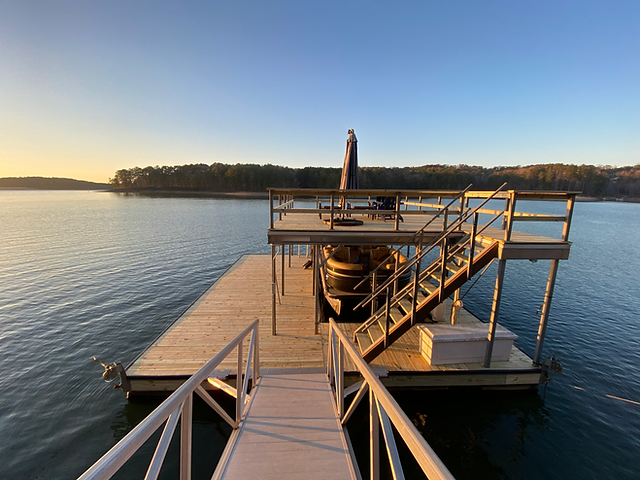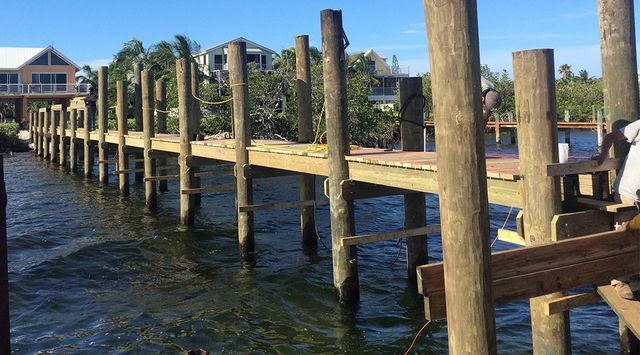Why Normal Maintenance Can Lower Future Dock Repairs
Why Normal Maintenance Can Lower Future Dock Repairs
Blog Article
Efficient Dock Repair Service Techniques: Ensuring Structural Honesty
Guaranteeing the structural stability of docks via efficient fixing strategies is paramount for the longevity and security of aquatic facilities. This involves a multi-faceted method beginning with extensive inspections utilizing innovative technologies like finder devices and remotely ran automobiles (ROVs) to detect both noticeable and hid problems. Subsequently, choosing the right repair work products, such as composite materials and corrosion-resistant alloys, is important for durability. Architectural support approaches, including the application of cross-bracing systems and load-distribution plates, play an important duty in mitigating anxiety factors. The value of these techniques ends up being evident when discovering innovative repair approaches and preventative maintenance strategies.
Examining Dock Damage
Assessing dock damage is a vital initial step in ensuring the structural stability and safety of any docking facility. Trick elements to take a look at consist of the dock's foundation, pilings, outdoor decking, and hardware (Dock Repairs).
Structural designers or qualified assessors usually perform these assessments using specialized devices and methods. Undersea inspections could utilize finder devices or remotely operated cars (ROVs) to discover submerged damages. Above water, aesthetic inspections are complemented by utilizing wetness meters and other diagnostic devices to reveal underlying issues not immediately visible to the naked eye.

Picking Fixing Products
Choosing the suitable repair materials is an essential action in the dock remediation procedure, one that directly influences the longevity and performance of the repaired framework. Material option must be driven by factors such as ecological conditions, load-bearing needs, and compatibility with existing dock parts. As an example, wood is a standard option for docks because of its all-natural strength and visual allure. Choosing the appropriate type of timber, such as pressure-treated lumber or normally rot-resistant types like cedar or teak wood, is critical to hold up against aquatic environments.
Along with wood, composite materials are significantly popular due to their toughness and reduced upkeep demands. Composites, commonly made from a mix of plastic and timber fibers, offer outstanding resistance to rot, pests, and UV damage. For steel docks, choosing corrosion-resistant alloys such as galvanized steel or marine-grade aluminum is vital to protect against corrosion and make sure structural stability in saline water problems.
Epoxy materials and marine-grade sealers are crucial for fixing fractures and securing joints, offering a waterproof barrier and boosting the dock's general strength. By thoroughly selecting high-quality products, dock repairs can attain long-lasting results, therefore protecting against future deterioration and making sure secure, reliable usage.
Architectural Reinforcement Methods
Effective structural support strategies are crucial in guaranteeing the security and durability of dock repair services. This approach is especially effective for docks subjected to heavy tons or severe ecological problems.
One more essential technique is the application of fiber-reinforced polymers (FRP) These materials offer high strength-to-weight proportions and superb resistance to rust, making them perfect for strengthening concrete or wood anchors. FRP can be used in strips or sheets and bonded with epoxy materials to boost architectural honesty.
Supporting and anchoring systems likewise play a critical function in architectural support. Cross-bracing, making use of steel or wooden beams, can neutralize side pressures, decreasing guiding and movement. Anchoring systems, such as helical piers or driven stacks, offer a secure foundation by moving loads to much deeper, more steady dirt layers.
Finally, the assimilation of load-distribution plates can help distribute weight a lot more equally throughout the dock's surface area, mitigating local stress points. These methods collectively make sure that docks remain risk-free and robust, qualified of Find Out More withstanding the roughness of their operational environment.
Advanced Repair Work Techniques

One more advanced method includes underwater welding, which enables repair work to be performed without the requirement to dewater the area. This method is specifically advantageous for addressing architectural issues in immersed dock components, making certain marginal disruption to operations. Improved welding strategies, combined with robotic systems, deliver precision and dependability, thereby extending the life expectancy of the dock.
Additionally, cathodic protection systems are applied to prevent rust in metal dock frameworks. By using sacrificial anodes or impressed existing systems, these strategies properly alleviate the electrochemical procedures that result in product damage.
Lastly, progressed surveillance modern technologies, such as architectural wellness monitoring (SHM) systems, offer real-time data on the condition of dock frameworks. These systems enable aggressive upkeep and prompt interventions, eventually guaranteeing the long-term structural integrity of i thought about this the dock.
Maintenance and Prevention
Maintenance and avoidance are essential ideas that underpin the durability and security of dock frameworks. Regular assessments are extremely important, permitting very early discovery of damage, potential weaknesses, and environmental impacts. An aggressive technique, entailing routine checks for deterioration, rot, and architectural shifts, alleviates expensive repair work and lengthens the dock's operational life.
Safety nets should consist of applying safety coverings to metal parts to guard versus corrosion and using treated wood to resist decay. Furthermore, ensuring appropriate drain and air flow can avoid water build-up, which is a common source of structural deterioration. Incorporating high quality materials and adhering to manufacturer guidelines during building and construction and repair service stages additionally play critical functions in improving longevity.

Educating workers in dock upkeep ideal techniques ensures consistent application of precautionary procedures. Leveraging technological advances, such as drones for examinations and sensors for real-time surveillance, can better improve upkeep initiatives. By prioritizing upkeep and prevention, dock owners can ensure architectural integrity, functional safety, and cost-efficient administration over the dock's life expectancy.
Final Thought
Finally, maintaining the architectural integrity of aquatic centers requires extensive dock repair service techniques. Thorough inspections making use of sophisticated devices discover both visible and hid damages, while the option of suitable repair products enhances longevity. Carrying out architectural reinforcement approaches addresses tension factors effectively. Advanced repair work strategies, coupled with routine upkeep practices, make sure the dock remains risk-free and functional under diverse ecological problems. Adopting these methods significantly extends the life expectancy and capability of aquatic infrastructure.
Guaranteeing the structural honesty of anchors via efficient repair work techniques is paramount for the long life and safety and security of marine facilities.Picking the proper repair work products is a pivotal action in the dock reconstruction procedure, one that straight influences the long life and performance of the repaired structure.Reliable structural support techniques are essential in making sure the stability and longevity of dock repairs. By focusing on upkeep and prevention, dock owners can make sure architectural honesty, functional safety and security, and cost-effective monitoring over the dock's life expectancy.
In final thought, keeping Click Here the architectural integrity of marine facilities requires detailed dock repair work methods.
Report this page